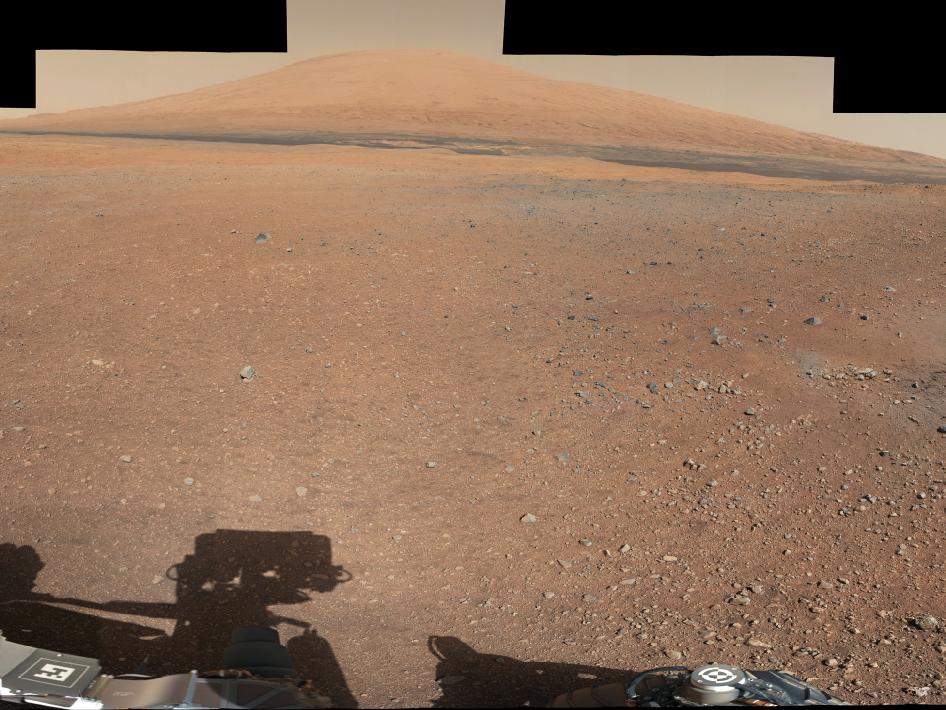
 Copyright © Michael Richmond.
This work is licensed under a Creative Commons License.
Copyright © Michael Richmond.
This work is licensed under a Creative Commons License.
Much of the material herein is taken from the excellent work by Emily Lakdawalla on the Planetary Society Blog.
On August 6, 2012 (EDT), the Mars Science Laboratory (MSL, also known as "Curiosity") touched down on the surface of Mars. It's been about seven weeks since then -- what has the rover been doing? Let's find out.

| Sols 1 - 8 | Check communications links, download software upgrades, perform simple tests of science instruments. |
| Sols 9 - 16 | Commissioning of most instruments. Take lots of pictures. |
| Sols 17 - 29 | Testing the robotic arm and all its instruments. First real motion across the surface. Panoramic images of the surroundings. |
| Sols 30 - 37 | Use the robotic arm to analyze material -- but no sample collection yet. Use APXS and MAHLI instruments on the arm. Travel to an interesting rock. |
| Sols 38 - 43 | Start moving toward a more distant science target: the rock "Jake Matijevic", about 300 meters from landing site. Look up into sky to see moons of Mars. |
| Sols 44 - | Investigate "Jake Matijevic" with APXS, but not with the grinder or other instruments. |
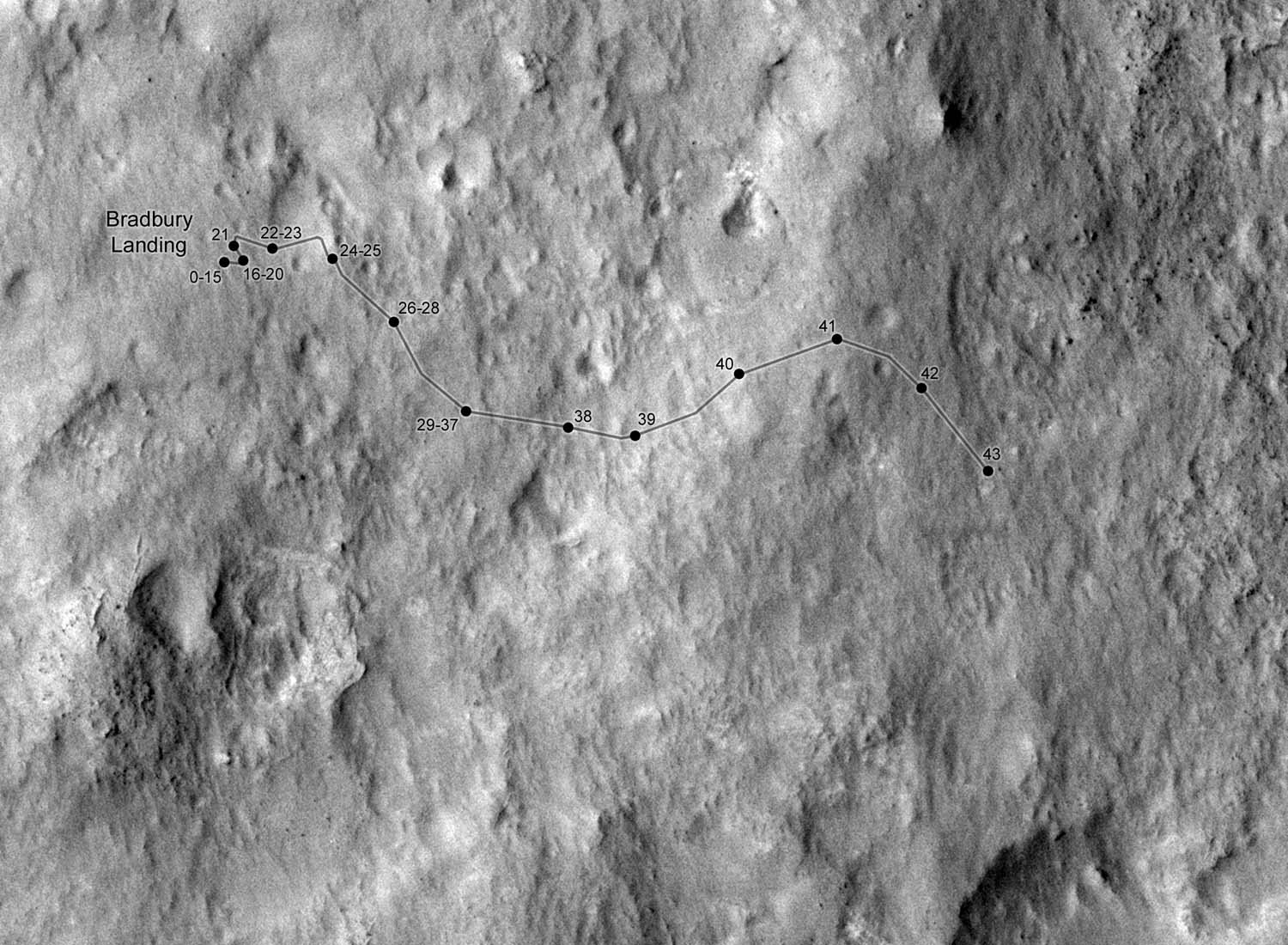
The pano-camera (for views of the landscape)
The picture below, taken on Sol 39, shows rocks which have a striated, or "layered", appearance. Rocks like this on Earth are formed by sediment deposited by streams and rivers.
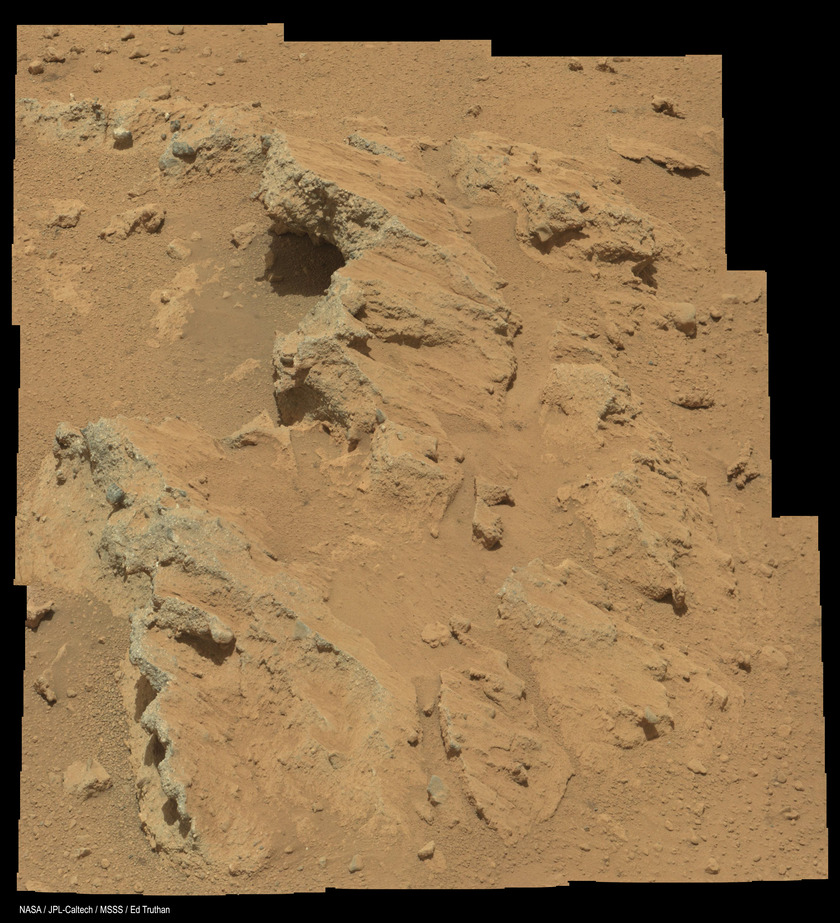
The ChemCam for chemical analysis of distant rocks
This is an artist's rendition ...
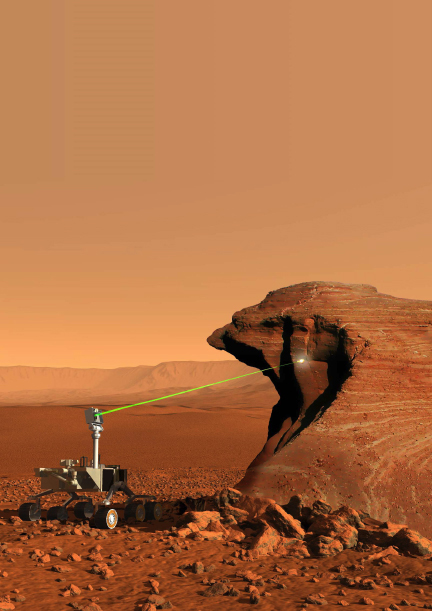
... but this is an actual picture of the ChemCam's first target on Mars.
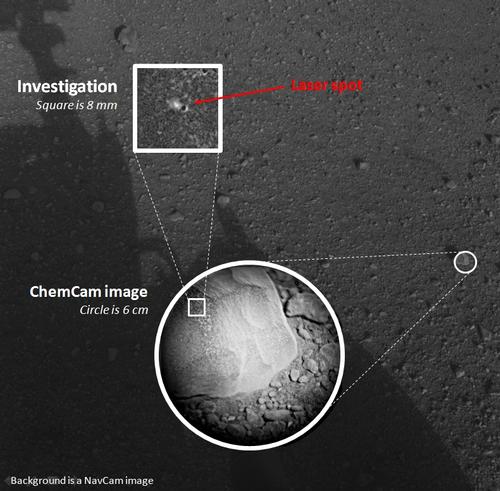
After zapping the rock with its laser, ChemCam measures the amount of light the vapor produces at different wavelengths; it can use the spectrum to figure out the chemical composition of the rock.
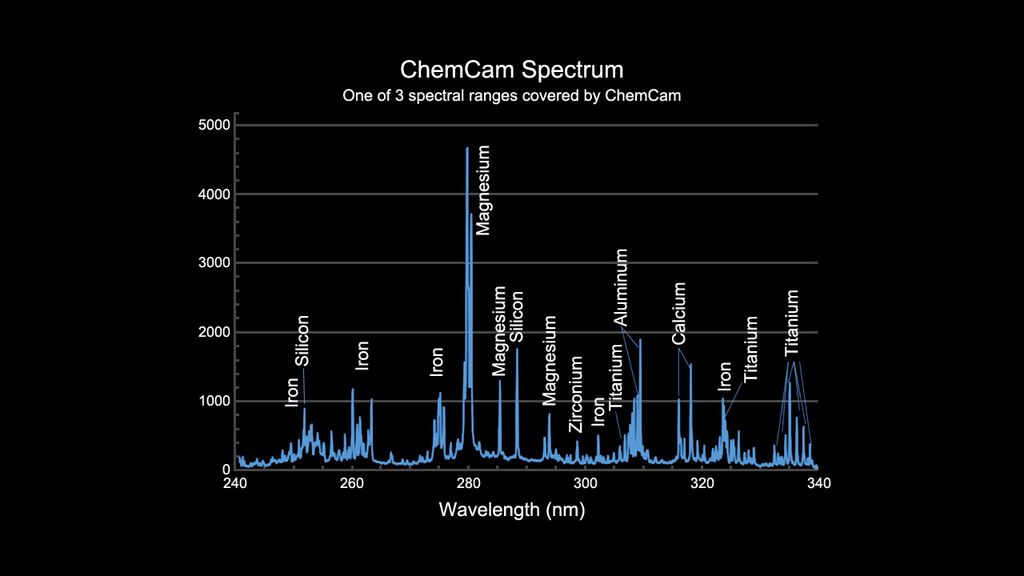
The rest of the instruments listed below are all mounted on the robotic arm.
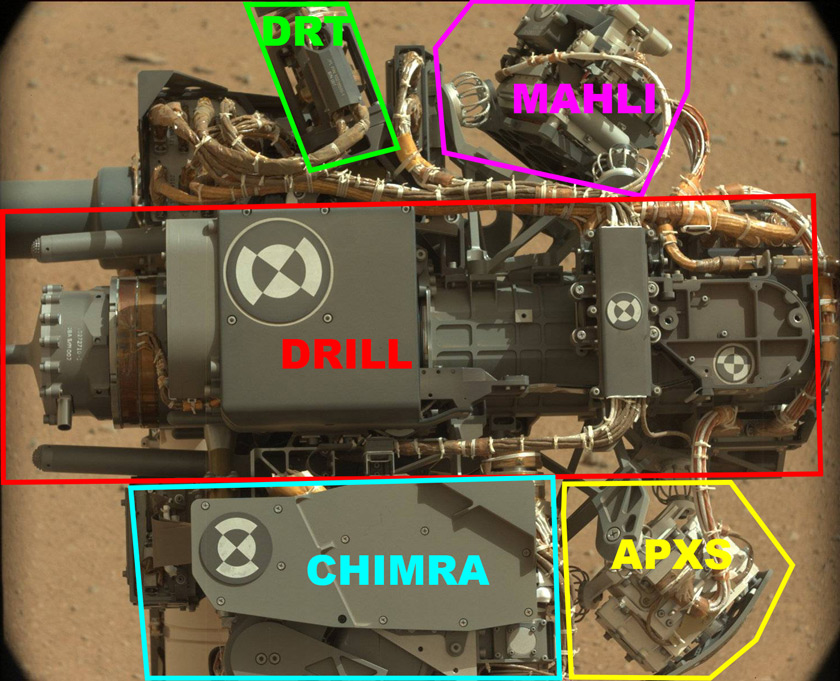
DRT = Dust Removal Tool
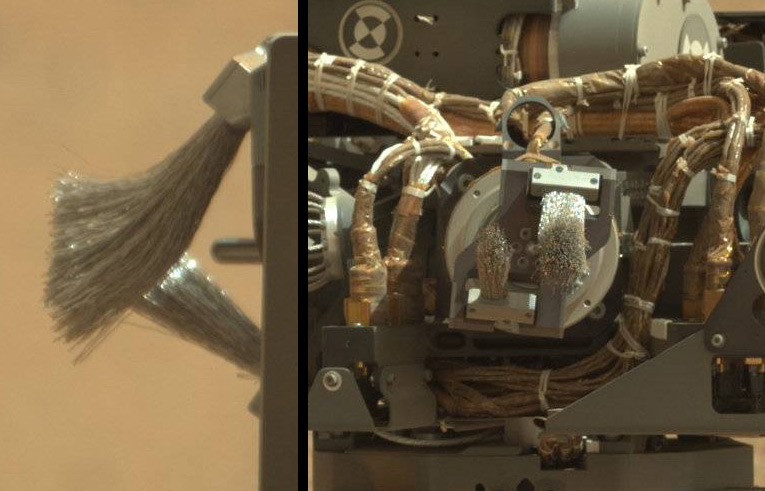
Drill
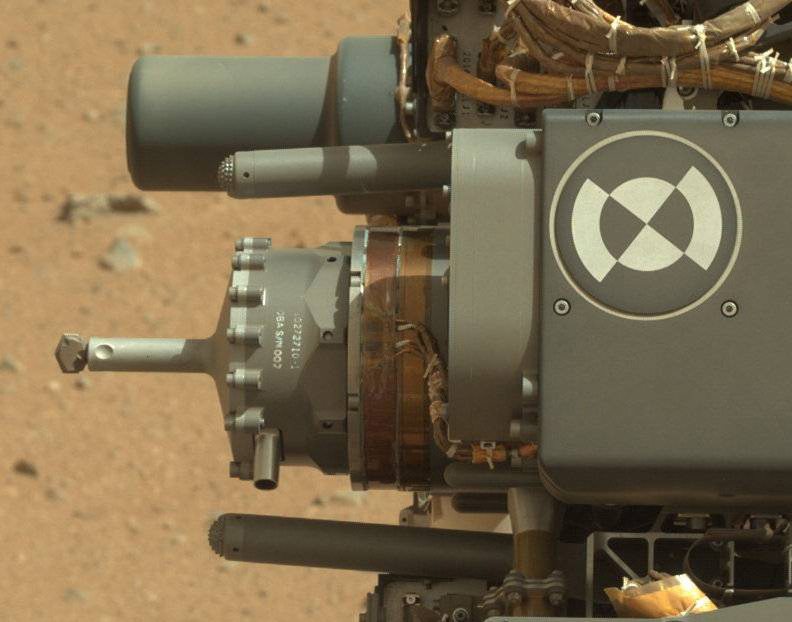
The MAHLI camera (for closeup pictures)
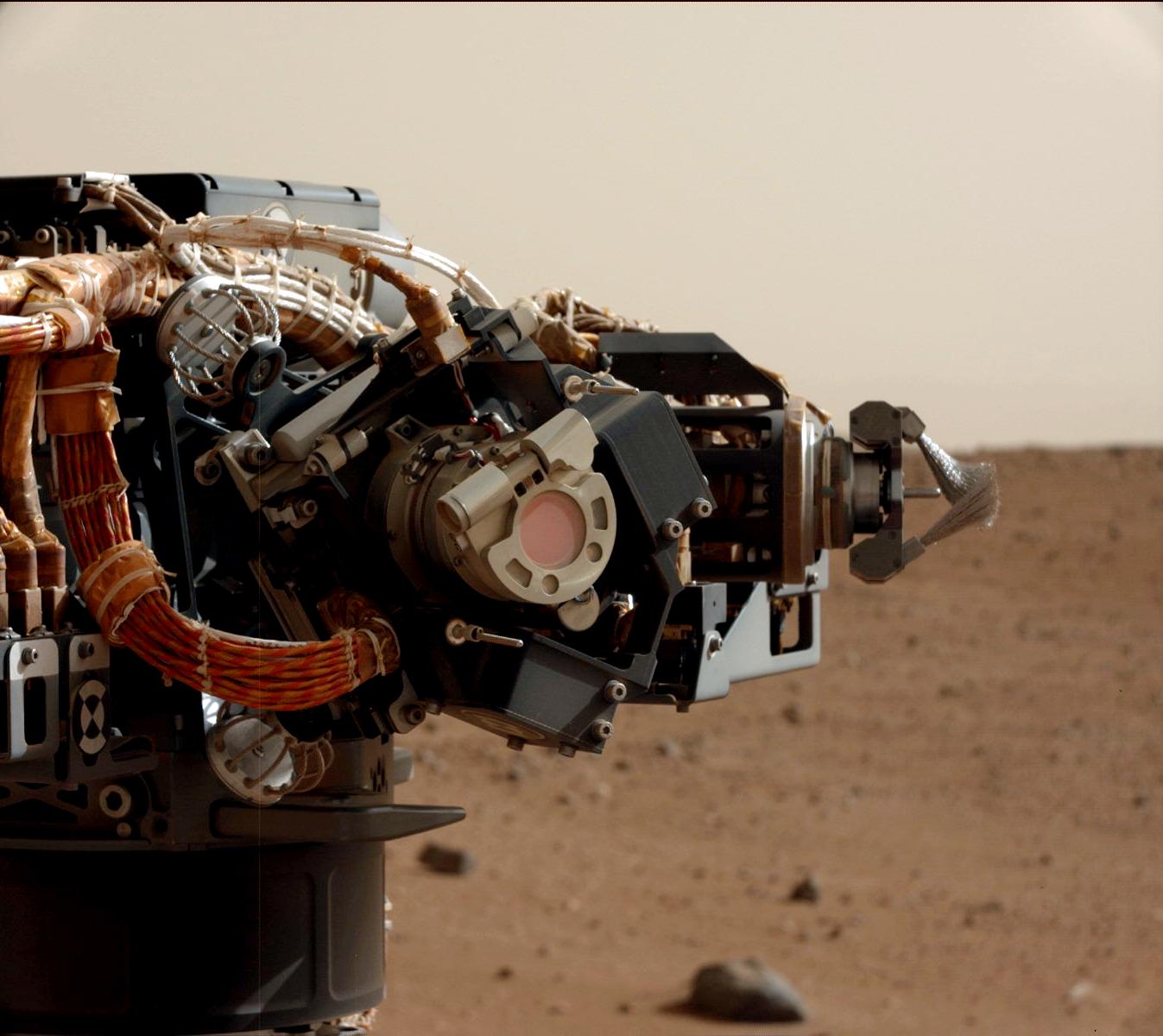
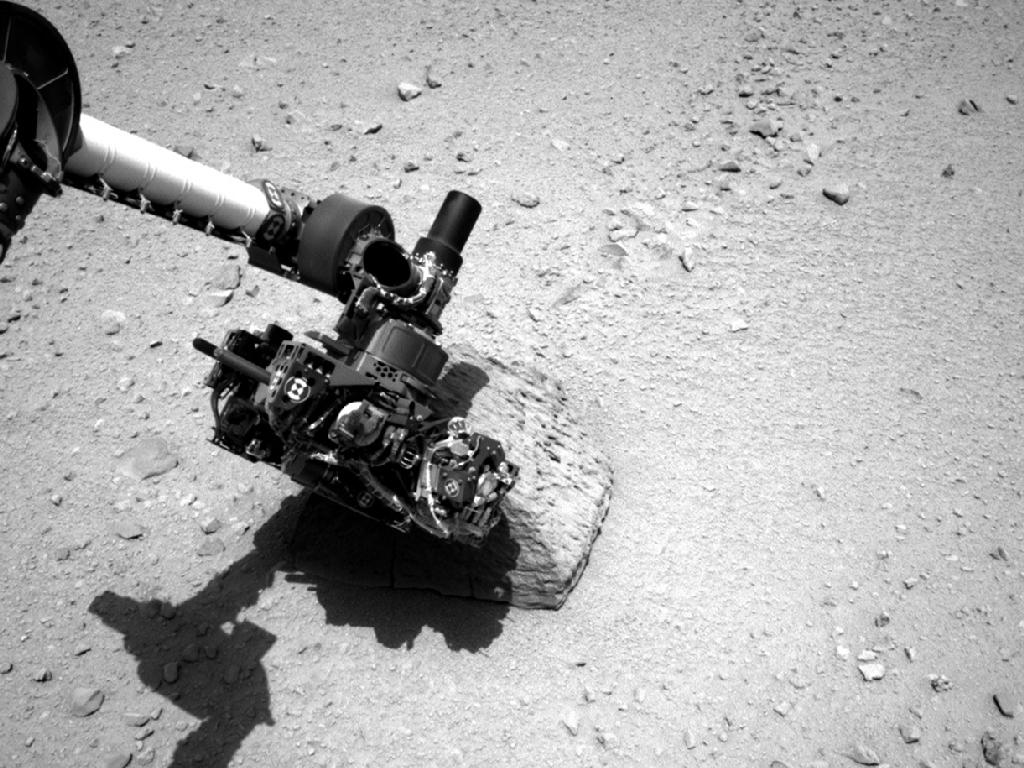
APXS = Alpha Particle X-ray Spectrometer
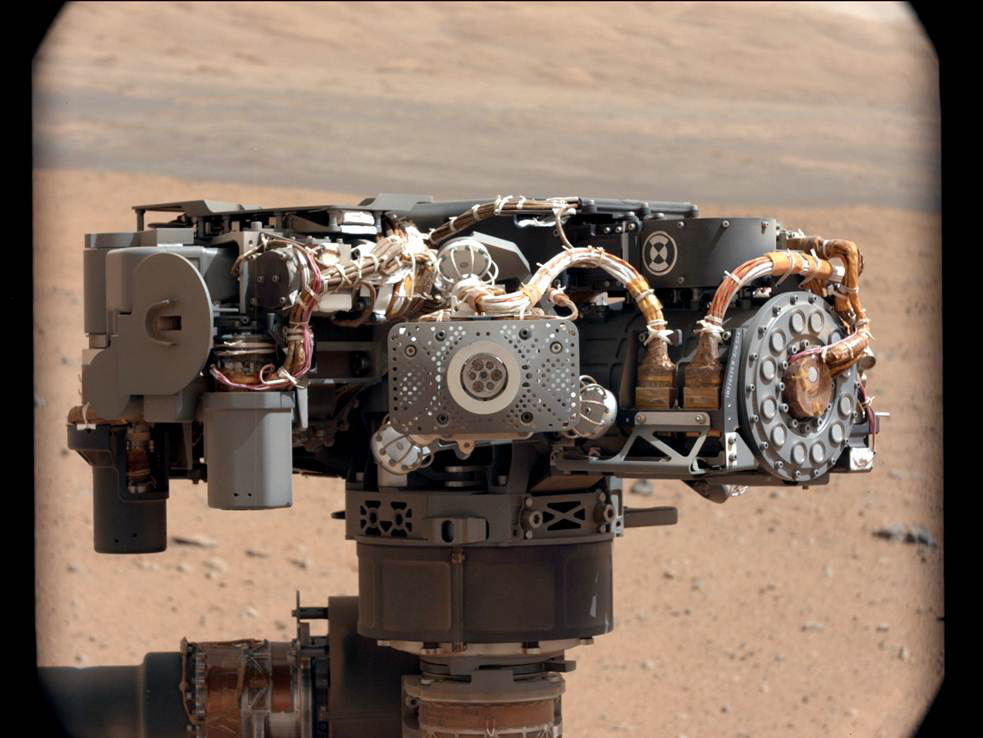
When APXS is pressed against a rock's surface, the radioactive material inside the instrument sprays the rock with energetic alpha particles. These particles excite atoms inside the rock, causing them to emit X-rays. Each element produces X-rays of a different energy, and the APXS spectrometer can figure out which elements are present inside the rock.
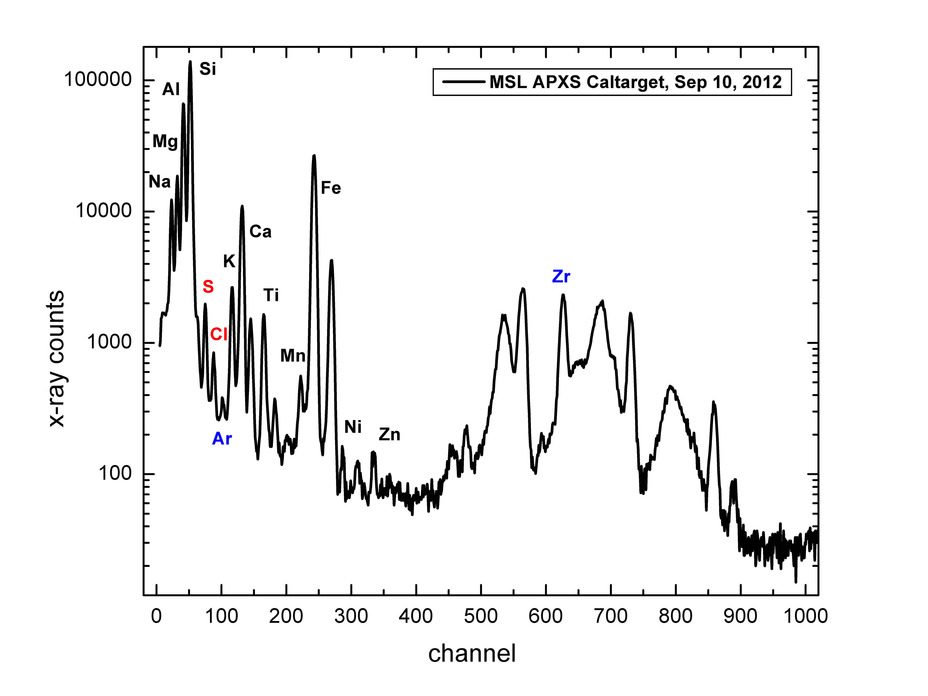
CHIMRA, for grabbing soil samples
Mounted on the arm is a device called CHIMRA, which is short for "Collection and Handling for In situ Martian Rock Analysis tool". Its job is to collect samples of dust and dirt which can them be transferred to the soil-analysis instruments which sit inside the rover's body.

The SAM (Sample Analysis at Mars) instruments will do the detailed analysis of soil samples. They sit on the top of the rover's main body.
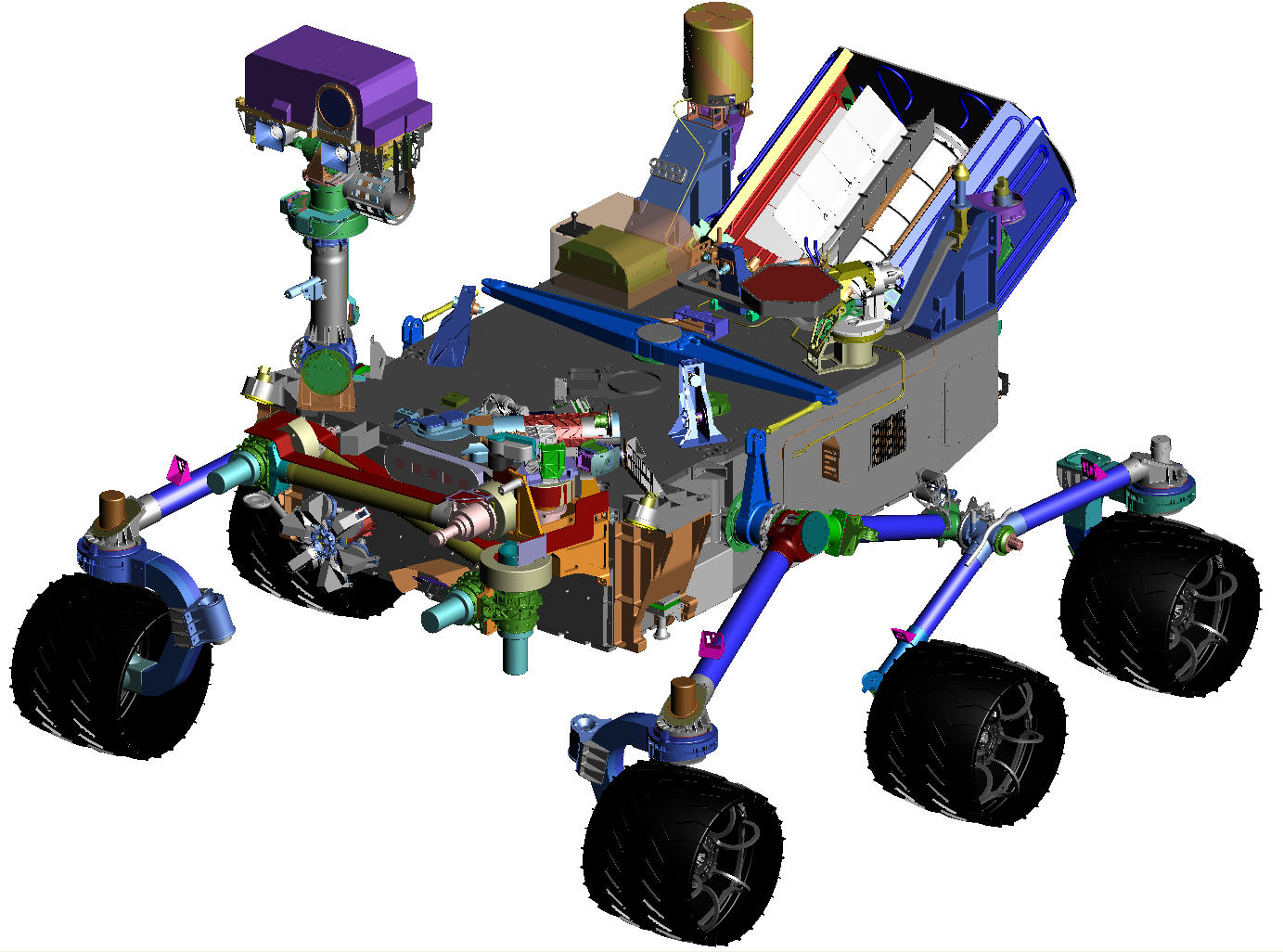
You can see them opening and closing their lids as part of a test in the picture below.
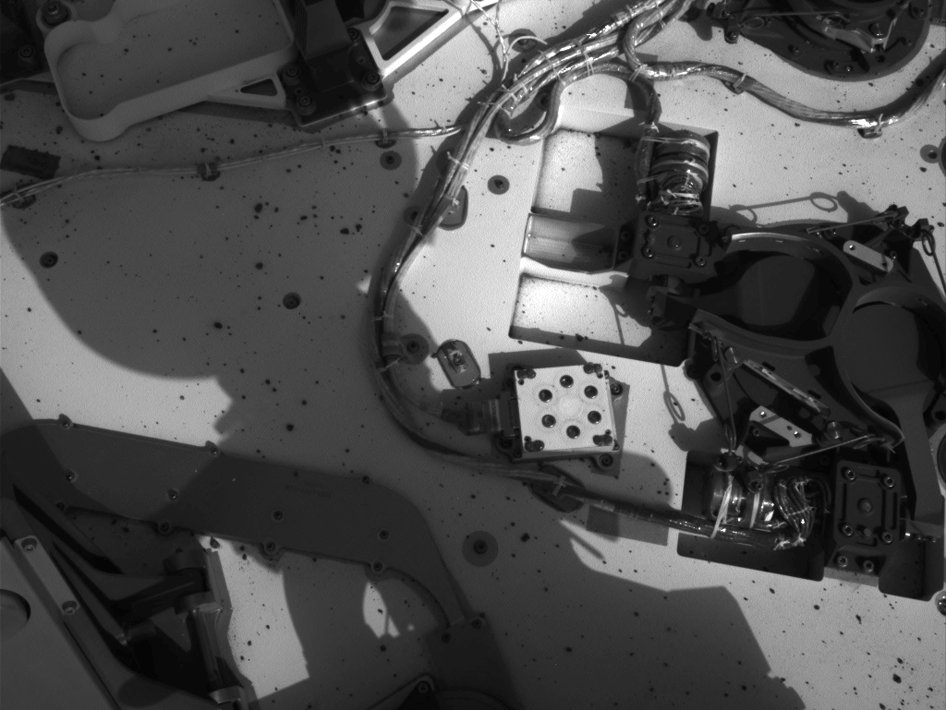
 Copyright © Michael Richmond.
This work is licensed under a Creative Commons License.
Copyright © Michael Richmond.
This work is licensed under a Creative Commons License.